Sony Bravia KDL-40EX503 40in LCD TV Review
Sony Bravia KDL-40EX503 40in LCD TV Review
The first commercially available Freeview HD TV.
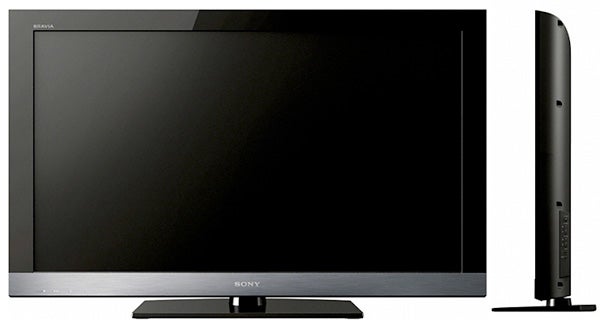
Verdict
Pros
- Freeview HD included
- Bravia Internet video platform
- Excellent black levels
Cons
- Slightly washed-out colours
- No 200Hz engine
Key Specifications
- Review Price: £814.99
- Freeview HD tuner
- 4 HDMI v1.3 ports
- 100Hz motion engine
- 1080p panel
- 2x10w audio output
This might seem a bit of a strange thing to say at the start of what you’ve doubtless already noticed is going to be a very positive review, but frankly I found testing the KDL-40EX503 a royal pain in the backside.
The thing is, I live in Derbyshire. This is not usually a bad thing in itself, of course – aside from it requiring me to support the ‘Ramtastic’ football club that boasts the record for the lowest tally of points ever recorded in a Premiership season. But living in Derbyshire is definitely problematic if you’re a TV reviewer who’s just received the first commercially available TV able to receive the new (they launched in December) Freeview HD broadcasts.
According to the latest information from the Freeview HD coverage checker on freeview.co.uk, my postcode is not going to be getting Freeview HD broadcasts until 2011. Not next week, not next month, but next year! Needless to say, 12 months seemed a bit of a long time to wait before there was any point getting the 40EX503 out of its box to review. So I had no choice but to come up with a drastic contingency plan. A contingency plan called Neil.

For Neil it is who happens to be both a mate and a bloke with a house within comfortable reception distance of the Crystal Palace broadcasting transmitter – one of the only two transmitters (the other being Winter Hill near Blackburn) broadcasting Freeview HD at the time of writing.
Obviously catching up with a mate I hadn’t seen for ages was quite nice. Not quite so nice was having to load the TV and all my testing gear up into my car, and hot-foot it from Derbyshire to deepest London – all without, I might add, any expenses being added to my usual review charge. Outrageous!
Of course, many of you will probably consider all this but a small price to pay for the chance to get early dibs on a Freeview HD TV. But I have to say I find it a bit ludicrous that in 2010 we have a situation where a really quite key bit of technological innovation is only available initially to people lucky enough to live in the right postcode. Especially as I don’t remember dear Aunty Beeb offering me any refund on my license fee until I was able to get the same level of service that other parts of the country are getting. Freeview HD = ‘free HD for all’? Pah!
Before I get too worked up, though, it’s high time I pointed out that precisely none of what I’ve been ranting about in the previous paragraphs is the fault of Sony’s 40EX503. This is simply a TV that’s designed to receive Freeview HD broadcasts whenever – and wherever – it finds them. It has no say in how fair or otherwise the broadcaster’s HD coverage might be, and would in fact doubtless be ecstatic if Freeview HD was already a national phenomenon. If a TV was capable of having feelings.
So let’s put the griping behinds us – until the next Freeview HD TV arrives through my door, at any rate – and start focussing on the specifics of the 40EX503.
For a TV that genuinely breaks new technological ground, the 40EX503 is a little unassuming to look at. Sony has tried to introduce a bit of flair via an aluminium panel stuck onto the TV’s lower edge, but this only adds a relatively small touch of opulence to what’s essentially another one of those 10-a-penny gloss-black rectangles that dominate so much of the TV market right now.
My first impressions of the 40EX503 weren’t helped, either, by the problems I had with, um, getting the provided batteries into the 40EX503’s remote control – despite Sony providing a diagram stuck to the remote to try and make the process easier. Mind you, in my own defence, the very fact that Sony has gone to the trouble of fastening a battery installation diagram to the remote suggests that it’s far more complicated than it really should be!
The set hits its stride more confidently when it comes to connections. Highlights beyond the predictable four HDMIs include a startlingly flexible USB 2.0 input (MP3, JPEG, and various video formats are all on the menu), a PC port, and an Ethernet port that is actually way more exciting on the 40EX503 than the same port was on any of Sony’s previous generation of Ethernet-sporting TVs.
Why? Because unlike the desperately flimsy offering of Sony’s previous AppliCast online service, Sony’s new Bravia Internet Video platform is arguably as revolutionary in its own way as the 40EX503’s integrated Freeview HD tuner.
Seriously, the amount of online content available through the 40EX503’s Ethernet port – or wirelessly if you get Sony’s optional Wi-Fi USB dongle – is so extensive it borders on bewildering.
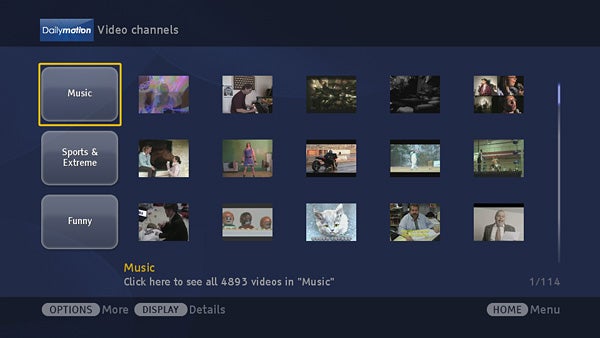
It would take forever to cover everything that’s on offer in detail. But a basic list of the 40EX503‘s ring-fenced online services shapes up like this: YouTube; blip.tv; Sony’s Digital Cinema Concert Series; The Ford Models channel (settle down, chaps); Daily Motion; OnNetworks; livestrong.com; SingingFool; National Public Radio; access to various popular podcasts; and LoveFilm.
The latter service is particularly innovative and important to readers of this site, since it will eventually (as in, imminently!) allow the streaming of full, feature-length films accessed via your LoveFilm account – an account which you will be able to sync your TV up with.
This service wasn’t quite up and running as I wrote this review: all you could access via the LoveFilm link were trailers, and these didn’t always stream perfectly on my admittedly fairly uninspiring 2Mbps broadband pipe, despite the 40EX503 impressively carrying a 7-second download buffer. But the LoveFilm service has the potential to become a huge feature for home cinema fans in the months and years to come.
The remote control interface for accessing all the 40EX503’s online features works well too, and leaves Sony in the enviable position of now setting the online pace rather than lagging behind as it did last year.
Looking for more prosaic features, I find the 40EX503 boasting a 100Hz engine for improving motion resolution, and Sony’s Bravia Engine 3 (BE3) video processing engine. It’s perhaps a tad disappointing that Sony has stuck with BE3 rather than doing its usual annual incremental improvement. But to be fair, BE3 has proved highly effective at keeping a lid on video noise, boosting contrast and enhancing sharpness.
Other little bits and bobs included to keep the tinkerers happy include Sony’s Live Colour system for enhanced colour tones, a black correction facility, a flexible gamma adjustment, and thoughtfully separated-out MPEG and ‘standard’ noise reduction systems.
After driving 130 miles to receive a blasted Freeview HD signal, it seemed only right to start my tests of the 40EX503 by checking out its Freeview HD pictures. And I’m happy to say the set did really well indeed, handling the HD signals amply well enough to confirm what I’d already come to expect from Freeview HD via previews I’d seen in the past: namely that Freeview HD broadcasts veer between being merely decent to being really quite excellent.
As with the fact that I had to go to London to test the 40EX503, the varying quality of the Freeview HD fare (from The BBC and ITV, with Channel 4 coming soon) is, of course, not the 40EX503’s fault. In fact, it merely shows just how pure a path the set is providing from the tuner to the screen, allowing the source material to appear exactly as broadcast.
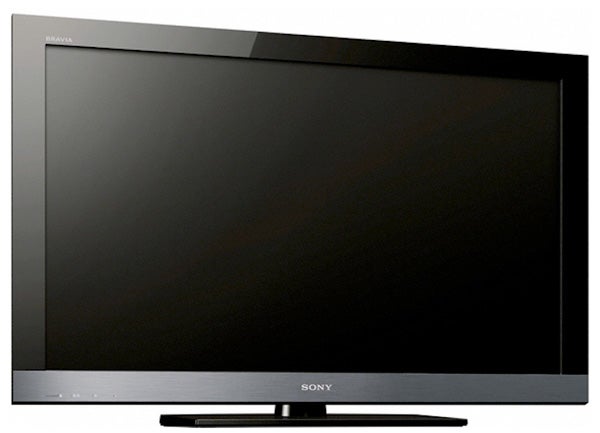
Naturally, the 40EX503 is perfectly capable of trying to improve the look of the lower quality, noisier HD fare that occasionally comes over the Freeview HD airwaves, thanks to the Bravia Engine and its noise reduction circuits. But to be fair, even the least impressive Freeview HD image easily trumps the best Freeview standard def pictures. And in any case, since my focus here is on a TV rather than the current state of the Freeview HD broadcasting service, I’d rather focus on the times when Freeview HD really hits its stride, and is shown in all its standard def-murdering glory by the 40EX503.
Regular readers will know that I’ve had more than a few inconsistent backlight problems with recent Sony TVs. So a good place to start my assessment of the 40EX503’s pictures is by saying that its black level response is really outstanding, and the dreaded ‘light pooling’ phenomenon is almost non-existent – or, at least, is barely visible over what I’d estimate to be less than 5 per cent of your overall viewing time.
The black levels achieved during really dark scenes attain almost LED-like depths at times, yet the amount of brightness the 40EX503’s dynamic contrast system has to lose to make such black levels possible isn’t as drastic as I’d have expected. Which means, of course, that bright elements in predominantly dark picture content still look reasonably punchy, and dark scenes overall look agreeably dynamic. Another hint as to just how clever the 40EX503’s dynamic contrast system is can be seen in the good amount of shadow detailing the set retains in dark areas.
More good news finds the 40EX503 exhibiting an unusually deft touch with colour reproduction, serving up generally immaculate blends and transitions, and managing to reproduce even the trickiest, smallest skin tone differentiations with aplomb.
Some people might feel that the 40EX503’s colours look ever so slightly washed out once the set has been calibrated to deliver its best all-round results. But for me this is a small price to pay for what works out to be predominantly very accurate colour tones that show source material in the way it was designed to look, rather than the more crowd-pleasing but ultimately less authentic approach favoured by more vulgar LCD TVs.
Sony LCD TVs have a well-deserved reputation for sharpness with HD material, and to some extent the 40EX503 follows this trend, revealing plenty of detail and texture in HD sources without making pictures look excessively noisy.
There is a touch of motion blur around, particularly during standard def viewing, even with the 100Hz engine in play. But while this stops pictures looking quite as crisp as they do on Sony’s 200Hz sets – or the best sets of some rival brands, especially Philips – it seldom seriously detracts from the overall hugely enjoyable experience of watching the 40EX503 strut its stuff. Especially as the set’s motion processing is very effective at suppressing judder.
It’s worth adding here that the 40EX503’s 100Hz engine goes about its reasonably effective business without drawing undue attention to itself. By which I mean that it doesn’t throw up too many undesirable side effects, such as flickering, edge shimmer, or lag. It’s particularly ‘clean’ if you stick with its standard setting rather than being tempted to try its High mode.
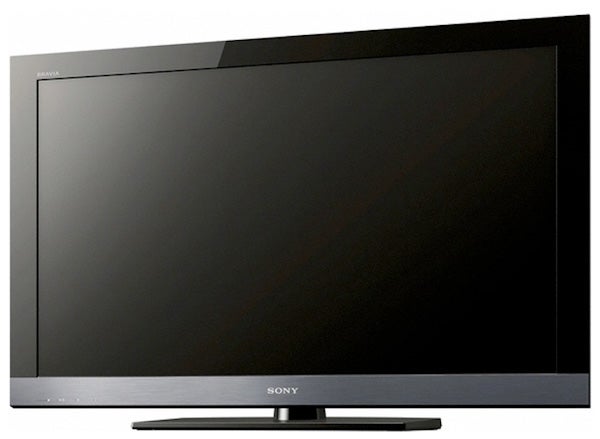
Other likeable things about the 40EX503’s performance find it losing a bit less picture quality than most LCD TVs when watched from an angle, and its screen showing impressively little ambient light interference. In other words, you shouldn’t find the impact of your favourite films being unduly diminished by the unedifying sight of your own ghostly reflection hanging over the action!
Although the 40EX503 certainly isn’t fat, nor does it attain the extreme slenderness we’re looking forward to seeing on Sony’s upcoming new edge LED ranges, I had high hopes that it might be able to use its relative bulk to produce something a bit out of the ordinary when it came to sound performance.
And in one way, it does. For it’s markedly better than many rivals at portraying subtle details in an audio mix – especially at the high end of the audio spectrum. Bird song, background chatter, gentle breezes… anything ambient in a mix emerges with clarity and power.
The set’s mid-range is solid too, able to deliver voices – even rich male ones – without distortion or significant clarity loss, and able to avoid sounding too compressed during action scenes.
The one audio failing is a predictable one for the flat TV world – a fundamental shortage of bass, which can leave raucous scenes sounding one-dimensional and those impressive trebles a little over-dominant.
”’Verdict”’
The KDL-40EX503 is the most revolutionary and groundbreaking TV I’ve seen from Sony for an age – at least in terms of something that’s actually accessible to the mainstream TV buying public.
It’s a shame, obviously, that the TV’s ‘free HD for everyone’ Freeview HD message is undermined so badly by the painfully slow process of upgrading the UK’s terrestrial TV transmitters. But even if you’re not scheduled to get Freeview HD in your area for another year or two, the 40EX503 does more than enough to justify you purchasing one now, safe in the knowledge that your Freeview HD future is secure.
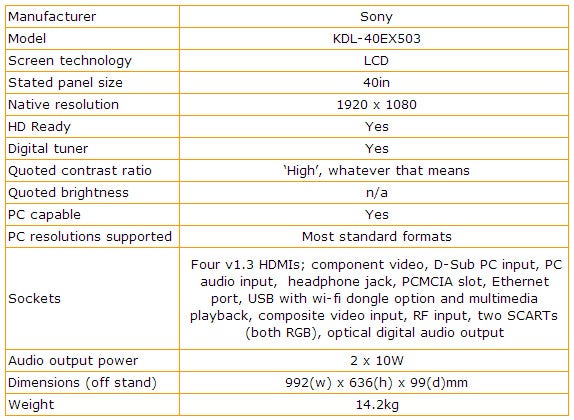
How we test televisions
We test every TV we review thoroughly over an extended period of time. We use industry standard tests to compare features properly. We’ll always tell you what we find. We never, ever, accept money to review a product.
Trusted Score
Score in detail
-
Features 8
-
Value 8
-
Image Quality 9
-
Design 7
-
Sound Quality 8
Features
| Size (Inch) | 40in |
| Display Type | LCD |
| Max. Resolution | 1920 x 1080 |
| Digital Tuner | DVB-T (MPEG4) |
| Refresh Rate (Hertz) | 100Hz |
Physical Specifications
| Height (Millimeter) | 636mm |
| Width (Millimeter) | 992mm |
| Depth (Millimeter) | 99mm |
| Weight (Gram) | 14.2g |

